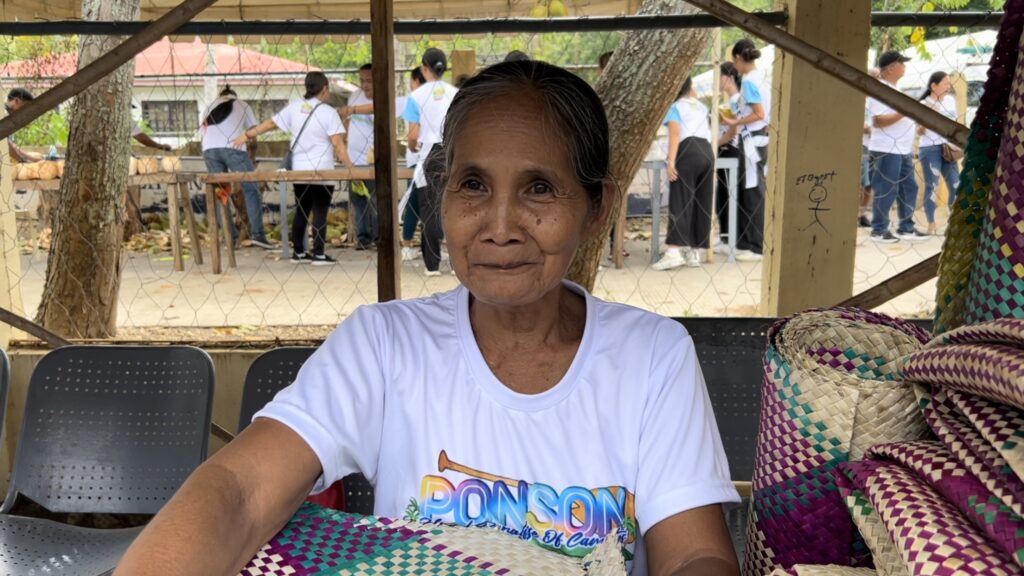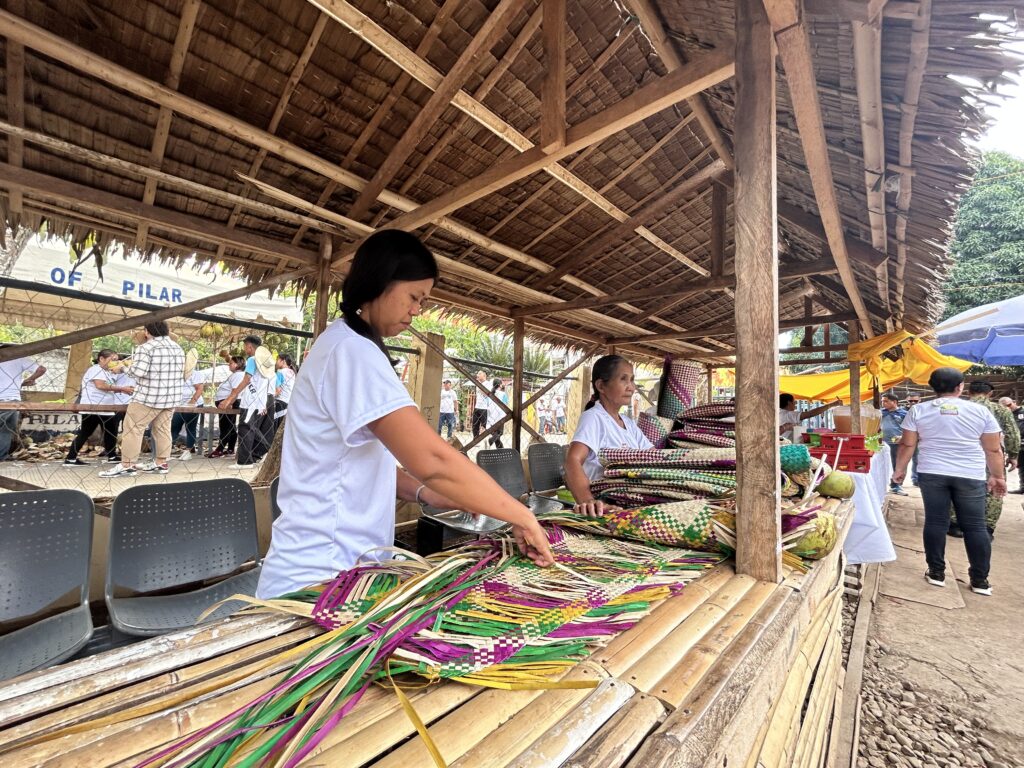
Ferie Capillanes, Nanay Abeth’s daughter, demonstrated how they interlace plant fibers to make a banig during the first day of Suroy Suroy Sugbo: Enchanting 1 Camotes on May 11, Saturday. CDN Digital photo | Niña Mae Oliverio
CAMOTES ISLAND, Cebu — On a Saturday morning, a delegation from the Provincial Government’s flagship tourism program gathered at Pier 1 in Cebu City to depart for an island off the eastern part of mainland Cebu.
At 10 a.m. the delegates of ‘Suroy Suroy Sugbo: Enchanting 1 Camotes Island’ arrived at the first stop of the two-day trip. They were greeted with the vibrant smiles and warm welcome of the residents of Pilar town on Ponson Island, Camotes, considered to be the remotest town in Cebu. Pilar is a separated from the main Camotes Island, making it more closer to Leyte Island than to Cebu.
After the delegates were given woven hats and a customized passport souvenir, they were transported to the Pilar Gym where lunch was waiting for them.
In the gym, there were different foods and crafts on display for participants to enjoy, including seafood, local delicacies, and woven products.
When the participants arrived, some stalls were still being set up, and among them was the stall of 65-year-old Elizabeth “Abeth” Capillanes.
READ: At least 350 guests to join Suroy Suroy in Camotes this April
Despite the humid air, Abeth flashed her warmest smile while introducing her ‘banig’ products to the people.
Abeth, who started making banig since she was 16, said that it had helped her sustain and support the needs of her five children in school.
What is banig?
Banig is a traditional handwoven mat usually used for sleeping. Abeth’s banig is made of interlaced fibers of Romblon plant.
“Nakatabang ni pag-ayuda namo, sa pag panginabuhi namo sa akong bana,” Abeth said.
The “family” size banig is priced at P700, the “extra family” at P800, the double at P600, and the single at P500.
Additionally, Abeth said they only sell their banig on the island and occasionally export it to Ormoc, Leyte, which is about three hours away in the northern part of the island.
Looking ahead, there’s no need to worry about passing on the weaving tradition to the next generation because that person was present that day.
READ: Weaving with passion, growing skills with Banig
Ferie Capillanes, 40, Abeth’s only daughter, was already weaving a banig during the conversation. Abeth mentioned that her daughter learned to weave as it was something they did as soon as they returned home from school.

Elizabeth “Abeth” Capillanes, 65, banig maker
The money they earned from selling banig also went towards buying materials for their school projects.
It takes four to five days to complete a handwoven mat before it’s ready for sale.
While they wait for the mats to be finished, their family also earns money from farming, fishing, and making local delicacies. Abeth’s husband is her partner in these ventures, with the assistance of their children.
Banig has undoubtedly been a significant part of every Filipino’s childhood. It’s more than just a mat; it holds all the woven memories, bringing comfort to every Filipino family. /clorenciana

